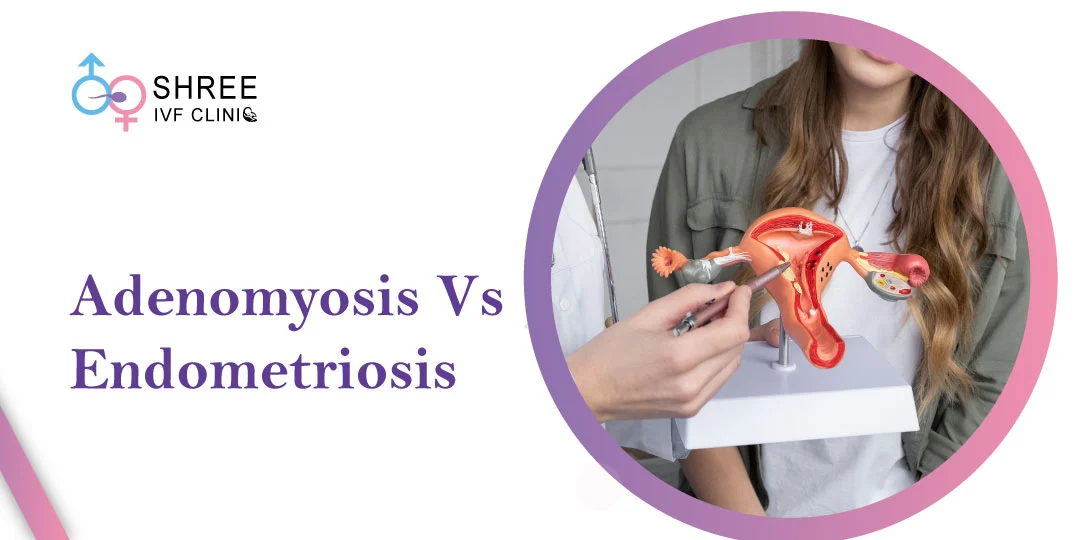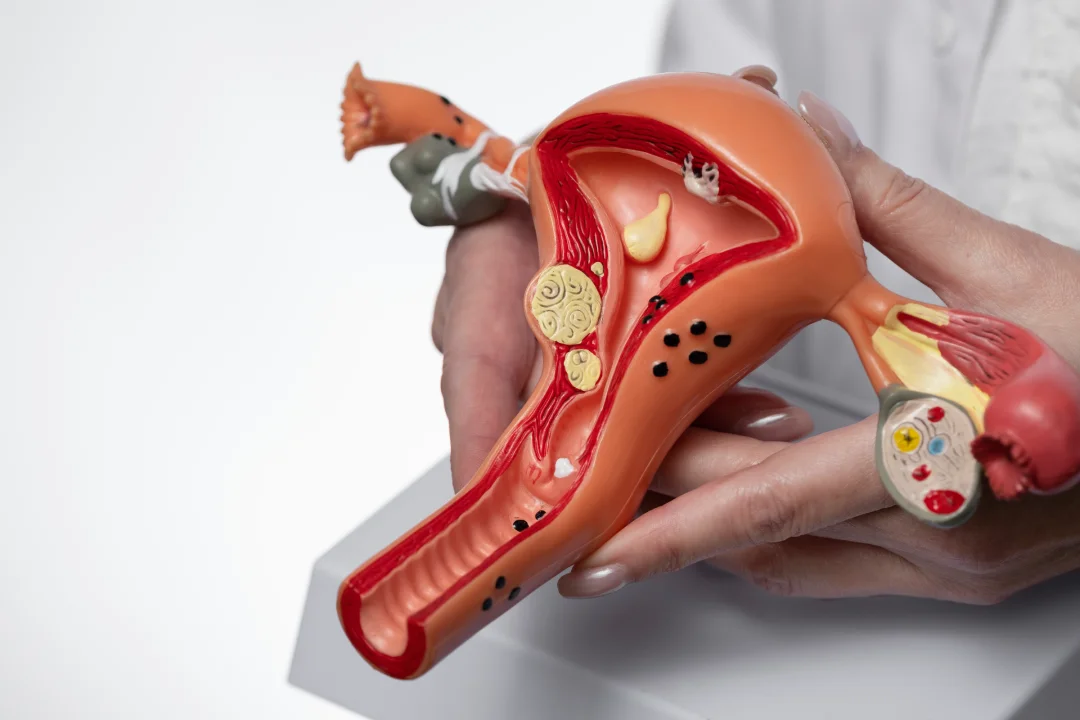A Comprehensive Guide to Managing Bladder Endometriosis
UPDATED ON 28 SEP. 2023

AUTHOR
Dr Jay Mehta
Scientific Director & IVF Specialist with 10+ years of experience
CONDITION
GET IN TOUCH ON
Bladder endometriosis is a complex and challenging condition that affects many women worldwide.
This comprehensive guide will delve deeper into the causes, symptoms, diagnosis, treatment options, emerging therapies, and coping strategies for bladder endometriosis.
By understanding this condition comprehensively, you can make informed decisions about your health and well-being.
Understanding Bladder Endometriosis
Bladder endometriosis occurs when endometrial tissue, which usually lines the uterus, grows outside the uterus and attaches to the bladder.
This abnormal growth can cause inflammation, scarring, and the formation of nodules or lesions on the bladder wall. The exact cause of bladder endometriosis is still not fully understood.
However, several factors may contribute, including retrograde menstruation (the backward flow of menstrual blood into the pelvis), genetic predisposition, hormonal imbalances, and immune system dysfunction.
For a consultation about endometriosis, you can visit Dr. Jay Mehta, one of the best endometriosis specialist in Mumbai.
Recognising the Symptoms and Seeking Diagnosis
Recognising the symptoms of bladder endometriosis is essential for early diagnosis and appropriate treatment. Common symptoms include pelvic pain, especially during menstruation, frequent urination, painful urination, blood in the urine, and recurrent urinary tract infections.
Some women may also experience bladder spasms, urinary urgency, and difficulty emptying the bladder. If you experience these symptoms, it is crucial to consult with a healthcare professional who specialises in endometriosis for a thorough evaluation and accurate diagnosis.
To diagnose bladder endometriosis, your doctor may perform various tests and procedures.
These may include a detailed medical history evaluation, a physical examination, imaging tests such as ultrasound or magnetic resonance imaging (MRI), and, in some cases, minimally invasive procedures like cystoscopy (insertion of a thin tube with a camera into the bladder) or laparoscopy (a surgical procedure to visualise and remove endometrial tissue).
Conventional Treatment Options
Conventional treatment options for bladder endometriosis aim to alleviate symptoms, reduce the size of endometrial growth, and improve quality of life. Hormonal therapy is often the first line of treatment and can include oral contraceptives, progestins, and gonadotropin-releasing hormone agonists.
These medications help regulate the menstrual cycle and suppress the growth of endometrial tissue. Nonsteroidal anti-inflammatory drugs (NSAIDs) can temporarily relieve pelvic pain and inflammation.
In addition to medication, physical therapy may play a role in managing bladder endometriosis. Pelvic floor physical therapy aims to improve muscle function and reduce pain in the pelvic region.
Techniques such as pelvic floor exercises, stretching, biofeedback, and relaxation techniques can help strengthen the pelvic floor muscles and alleviate symptoms.
Lifestyle modifications are also crucial in managing bladder endometriosis. Regular exercise, a balanced diet, stress management techniques, and adequate sleep can contribute to overall well-being and symptom management.
Some women find that avoiding trigger foods, such as caffeine, alcohol, spicy foods, and artificial sweeteners, can help reduce bladder irritation and frequency of symptoms.
Surgical Interventions
Surgical intervention may be necessary in cases where conservative treatments are ineffective, or symptoms are severe. Laparoscopic surgery is the standard surgical approach for bladder endometriosis.
During this minimally invasive procedure, the surgeon uses a laparoscope to visualise and remove endometrial implants and repair any bladder damage. Surgery aims to improve symptoms, preserve fertility if desired, and restore normal bladder function.
In more extensive cases of bladder endometriosis, surgery may involve partial bladder resection or, in severe cases, a hysterectomy (removal of the uterus). Skilled surgeons with expertise in endometriosis and urological surgeries should only perform these procedures.
It’s important to note that surgical treatment options carry potential risks and should be carefully considered in consultation with a healthcare professional.
Possible surgery complications include infection, bleeding, scarring, and organ damage.
Recovery time can vary depending on the extent of the surgery and individual factors.

4062+
353K
” Every individual and couple’s journey is unique, and
finding the right solutions tailored to their specific
circumstances can make all the difference “
Emerging Treatment Approaches
Researchers are continually exploring new treatment approaches for bladder endometriosis. Targeted therapies, such as anti-angiogenic agents and hormone modulators, are being investigated for their potential to target and inhibit the growth of endometrial tissue specifically.
Anti-angiogenic agents work by inhibiting blood vessel growth, which is necessary for the survival and progression of endometrial implants. Hormone modulators can specifically target oestrogen receptors, reducing the influence of oestrogen on endometrial tissue.
These emerging therapies show promise but require further research before being implemented as standard treatments.
Additionally, complementary and alternative medicine (CAM) practices may relieve some women of bladder endometriosis symptoms. These practices include acupuncture, herbal remedies, dietary changes, and mind-body techniques. Acupuncture involves the insertion of fine needles into specific points on the body to promote balance and alleviate pain.
Some herbs, such as turmeric and ginger, have anti-inflammatory properties that may help reduce pelvic pain. Dietary changes may also be beneficial, such as avoiding inflammatory foods and incorporating more anti-inflammatory foods like fruits, vegetables, and omega-3 fatty acids.
Mind-body techniques like yoga, meditation, and stress reduction exercises can help manage pain and improve overall well-being. It is essential to consult with a healthcare professional before considering any CAM approaches to ensure they are safe and compatible with your treatment plan.
Coping Strategies and Self-Care
- Heat therapy: A heating pad or warm baths can help relax muscles and alleviate pelvic pain.
- Relaxation techniques: Practising deep breathing exercises, progressive muscle relaxation, or guided imagery can help reduce stress and manage pain.
- Over-the-counter pain relievers: Nonsteroidal anti-inflammatory drugs (NSAIDs), such as ibuprofen, can temporarily relieve pelvic pain and inflammation. However, using them as directed and consulting with your healthcare professional is essential.
- Stress management: Finding effective stress management techniques, such as mindfulness meditation, yoga, or engaging in hobbies and activities that bring joy, can help reduce the impact of stress on your symptoms.
- Healthy lifestyle: Maintaining a balanced diet, engaging in regular physical activity, getting enough sleep, and avoiding smoking and excessive alcohol consumption can contribute to overall well-being and symptom management.
- Emotional support: Seek support from friends, family, or support groups who understand your experiences. Sharing your feelings and concerns can provide emotional relief and help you feel less alone.
- Mental health: Prioritise your mental health by seeking professional help if needed. Therapists or counsellors trained in chronic pain or endometriosis management can offer guidance and support.
Conclusion
Endometriosis surgery can effectively treat the symptoms and improve the quality of life for women with endometriosis. The success of the surgery depends on various factors, including the stage of the disease, the surgeon’s expertise, and individual patient factors.
Having realistic expectations and understanding that surgery may not completely eliminate all symptoms is essential. However, with proper care, recovery, and ongoing management, many women find significant relief and improvement in their overall well-being.
If you’re considering endometriosis surgery or exploring other treatment options, consult a gynaecologist specialising in endometriosis to discuss your unique situation and develop a comprehensive treatment plan.
Remember, you don’t have to face endometriosis alone – resources and support are available to help you navigate this journey.
You can also book an appointment with our experts to know the best endometriosis treatment for you.
AUTHOR
Dr Jay Mehta
Scientific Director & IVF Specialist with 10+ years of experience
CONDITION
CALL US 24/7 FOR ANY HELP
GET IN TOUCH ON
Share Article on
Recommended Reading
Difference Between Adenomyosis and Endometriosis
Adenomyosis involves the invasion of endometrial tissue into the uterine wall, while endometriosis is the presence of endometrial tissue outside the uterus.
Exploring the Success of Endometriosis Surgery: A Comprehensive Guide
Endometriosis is a medical condition in which the tissue that lines the inside of the uterus (endometrium) grows outside it.
Endometriosis Stage 4
Endometriosis is a very common gynecological condition that can occur in any woman at childbearing age.








